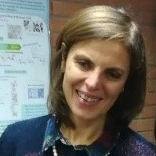Marine Extremophiles
A special issue of Marine Drugs (ISSN 1660-3397). This special issue belongs to the section "Marine Chemoecology for Drug Discovery".
Deadline for manuscript submissions: closed (31 December 2022) | Viewed by 1951
Special Issue Editors
Interests: polysaccharides and oligosaccharides; marine extremophiles; secondary metabolites; structural elucidation; physico-chemical properties; biofilm
Special Issues, Collections and Topics in MDPI journals
Interests: lipopolysaccharides; glycoconjugates; extracellular polysaccharide; capsular polysaccharide; NMR spectroscopy; anti-biofilm molecules; mass spectrometry; cold-adapted bacteria
Special Issues, Collections and Topics in MDPI journals
Special Issue Information
Dear Colleagues,
Marine environments include seas, oceans, river mouths, and salt lakes. Within marine ecosystems, there are some extreme ecological niches where microbial life is very active. In these sites, extreme conditions include high or low values of temperature, pressure, pH value, salinity, and concentrations of metals or gas. Bacteria, algae, and archaea thriving in these habitats have been named extremophiles. Due to their metabolic strategies and smart adaptations, extremophiles are a valuable source of information about the early-stage life on our planet and the pathogens emerging with the phenomenon of global sea warming. In addition, extremophiles are an untapped reservoir of low-molecular-mass molecules and polymers with unexplored activity to be exploited for industrial applications.
We are pleased to invite you to submit research articles or reviews to this Special Issue entitled “Marine Extremophiles”. Original research articles and reviews including secondary metabolites as well as the isolation , structural characterization, and biological activity of polysaccharides and glycolipids, are welcome. In addition, papers describing structures–activity relationships are especially invited.
We look forward to receiving your contributions.
Prof. Dr. Maria Michela Corsaro
Dr. Angela Casillo
Guest Editors
Manuscript Submission Information
Manuscripts should be submitted online at www.mdpi.com by registering and logging in to this website. Once you are registered, click here to go to the submission form. Manuscripts can be submitted until the deadline. All submissions that pass pre-check are peer-reviewed. Accepted papers will be published continuously in the journal (as soon as accepted) and will be listed together on the special issue website. Research articles, review articles as well as short communications are invited. For planned papers, a title and short abstract (about 100 words) can be sent to the Editorial Office for announcement on this website.
Submitted manuscripts should not have been published previously, nor be under consideration for publication elsewhere (except conference proceedings papers). All manuscripts are thoroughly refereed through a single-blind peer-review process. A guide for authors and other relevant information for submission of manuscripts is available on the Instructions for Authors page. Marine Drugs is an international peer-reviewed open access monthly journal published by MDPI.
Please visit the Instructions for Authors page before submitting a manuscript. The Article Processing Charge (APC) for publication in this open access journal is 2900 CHF (Swiss Francs). Submitted papers should be well formatted and use good English. Authors may use MDPI's English editing service prior to publication or during author revisions.
Keywords
- exopolysaccharides
- secondary metabolites
- glycolipids
- structural characterization
- NMR
- bioactive compounds
- lipopolysaccharides
- adaptation







